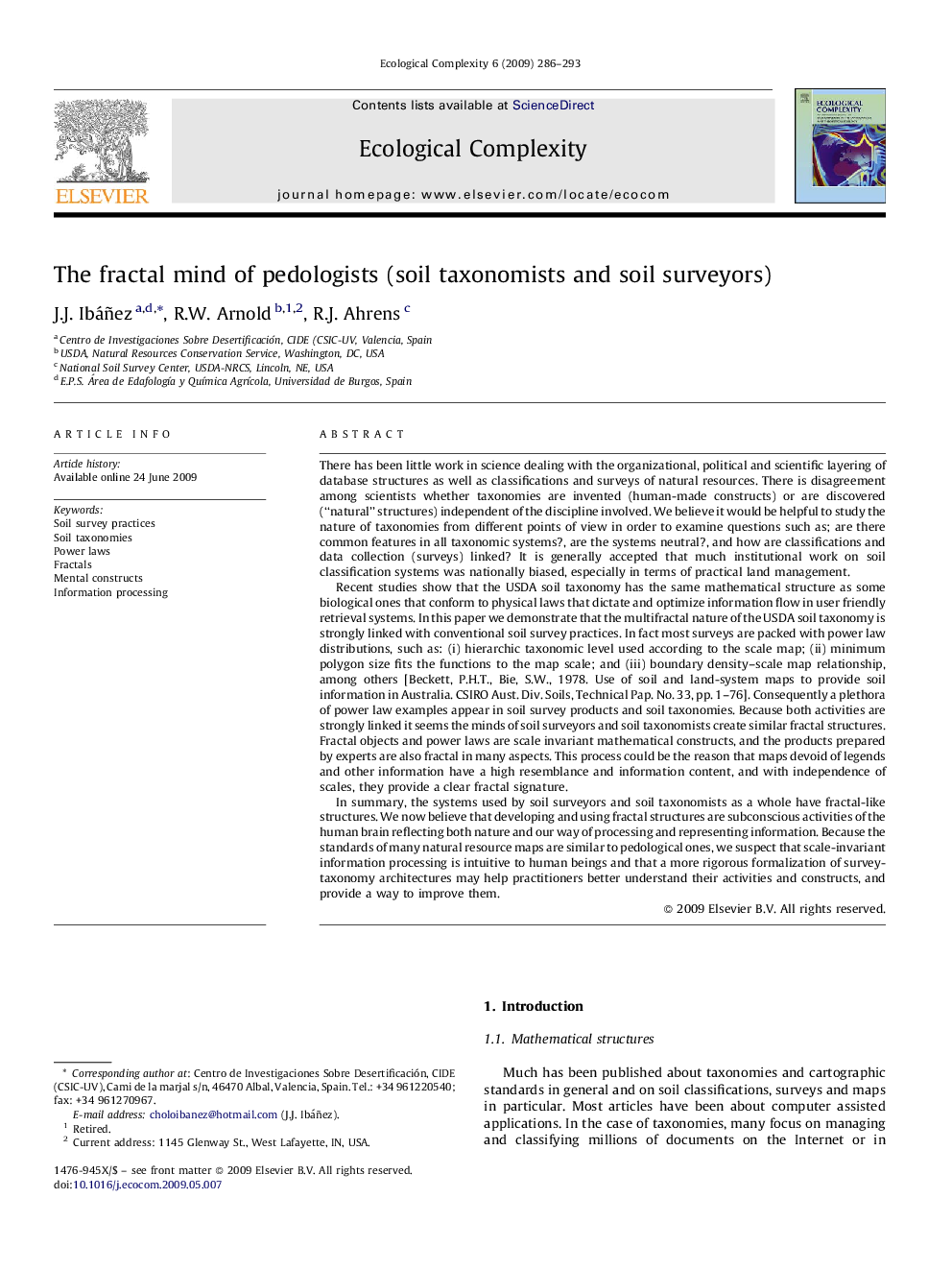| Article ID | Journal | Published Year | Pages | File Type |
|---|---|---|---|---|
| 4372751 | Ecological Complexity | 2009 | 8 Pages |
There has been little work in science dealing with the organizational, political and scientific layering of database structures as well as classifications and surveys of natural resources. There is disagreement among scientists whether taxonomies are invented (human-made constructs) or are discovered (“natural” structures) independent of the discipline involved. We believe it would be helpful to study the nature of taxonomies from different points of view in order to examine questions such as; are there common features in all taxonomic systems?, are the systems neutral?, and how are classifications and data collection (surveys) linked? It is generally accepted that much institutional work on soil classification systems was nationally biased, especially in terms of practical land management.Recent studies show that the USDA soil taxonomy has the same mathematical structure as some biological ones that conform to physical laws that dictate and optimize information flow in user friendly retrieval systems. In this paper we demonstrate that the multifractal nature of the USDA soil taxonomy is strongly linked with conventional soil survey practices. In fact most surveys are packed with power law distributions, such as: (i) hierarchic taxonomic level used according to the scale map; (ii) minimum polygon size fits the functions to the map scale; and (iii) boundary density–scale map relationship, among others [Beckett, P.H.T., Bie, S.W., 1978. Use of soil and land-system maps to provide soil information in Australia. CSIRO Aust. Div. Soils, Technical Pap. No. 33, pp. 1–76]. Consequently a plethora of power law examples appear in soil survey products and soil taxonomies. Because both activities are strongly linked it seems the minds of soil surveyors and soil taxonomists create similar fractal structures. Fractal objects and power laws are scale invariant mathematical constructs, and the products prepared by experts are also fractal in many aspects. This process could be the reason that maps devoid of legends and other information have a high resemblance and information content, and with independence of scales, they provide a clear fractal signature.In summary, the systems used by soil surveyors and soil taxonomists as a whole have fractal-like structures. We now believe that developing and using fractal structures are subconscious activities of the human brain reflecting both nature and our way of processing and representing information. Because the standards of many natural resource maps are similar to pedological ones, we suspect that scale-invariant information processing is intuitive to human beings and that a more rigorous formalization of survey-taxonomy architectures may help practitioners better understand their activities and constructs, and provide a way to improve them.
